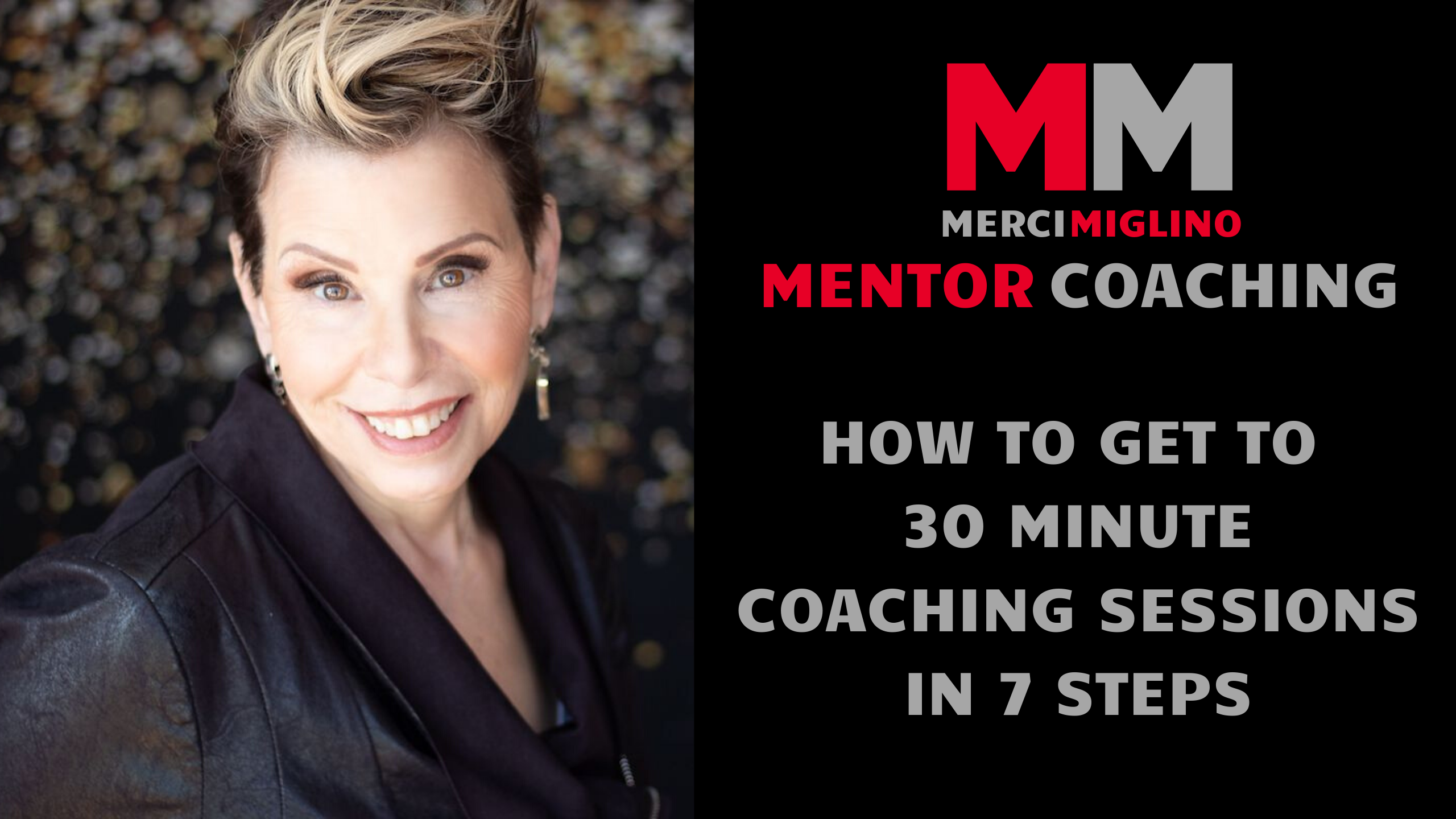(and demonstrate all relevant Core Competencies!)
When I first began coaching, I could not imagine a 30-minute session that was practical, productive, and transformational. But over the years, as my skills were sharpened by teaching coach training and mentoring for the MCC credential, I slowly noticed my clients were getting real results after only 30-minutes.
I wasn’t aiming for 30 minutes or “hurrying up the client.” It just started to happen.
So that’s why I’d like to share what I’ve learned. And save you some frustration, especially if you are working on a 30-minute recording for an ICF credential.
- Longer is not always better. Don’t equate the amount of time you coach as the only way to establish your value. We often talk too much, try to come up with brilliant questions, or fail to listen intently because we feel we have to “DO” something to be seen as worthwhile or to prove to some perceived outside world that coaching is valuable. Let that sh*t go.
- Sing-Along! If you are nervous, it’ll slow you down. Before recording the session and before the client arrives, put your anxieties to a song and sing it out. Singing your thoughts separates you from their meaning. And it lightens you up. Instead, treat them like you would a silly song. The feelings are there (not stuffed down to return with a vengeance), but they have little effect on your life or your recorded session. Try an app Songify which turns your words into a song, then sets them to music. And sing along!
- Move your body. Shake it around. Dance like no one is watching and do it until you feel so light and silly that you laugh aloud. By moving our bodies, we can actually change our mood from anxiety to excitement. Do this before the recording, and you’ll be free from most of that performance anxiety.
- Prepare the client. Since you will inform your client that the session will be recorded for credentialing purposes, consider asking them to come to the call with a topic in mind. Of course, it might change during the session, but it’s an excellent way to get right to it when you meet.
- Listen intently to the client’s first words. We are nervous about any coaching session; we are often so into our heads we miss key aspects of what the client is saying. The client almost always alludes to why the situation is a problem for them, their perspective, or beliefs about it. These are often missed unless we are listening specifically for them and not worrying about ‘how we are doing.’ When you reflect on the client’s topic, make sure it takes in the whole person – do not worry about getting every detail right. Instead, focus on how the client is feeling about the situation – i.e., stuck, confused, unclear, anxious, etc.
- If you see something, say something – Sharing your observations, thoughts, intuitions, and comments can save you time and often cuts through to the real concerns of your client. In fact, one observation can keep you from asking several questions because you are trying to lead them towards what you are seeing. Instead, share your observations in a non-judgmental, unattached way. And no, this isn’t your opinion of what is right or wrong, good or bad for the client. It is noticing something – a contradiction, an apparent unrealistic expectation, etc. And simply saying, “it seems like…” or I’m noticing… whatever it is you are aware of.
- THE HOLY COACHING AGREEMENT- Spend time to create the coaching agreement. Explore the client’s responses. Often, the client gives you a clue to their mindset or perspective when they tell us what they want to get from the session.Fictional Client Example:
Jason tells us he just got a new job after a few months of trying and is excited about the work. However, he says he is putting a lot of pressure on himself to keep up with those in the company for several years and fears that he will not succeed if others think he is flailing.
When asked by the coach, “What do you need from the coaching today?” Jason responds, “I want to feel excited and not so focused on comparing myself to others.”
After a pause, the client adds, “I don’t want to let people down.” And he says this with a glimmer of new awareness that the pressure he is feeling is coming from the job a well as changes in his personal life.
This takes all of 5 minutes to transpire. In that time, we see a couple of perspectives that have this person stuck. Comparing himself to others who have more experience with the company, having unrealistic expectations, and a bit of black and white thinking, like ‘I can either succeed and everyone will be happy, or I can fail and let everybody down.’
In this short time, you have gleaned specifics about the situation, but more importantly, you are getting a sense of what makes the situation a problem for this client. You will have a good idea of what thought, idea, or perspective is limiting or blocking the client from the action. Once the client has a new perspective, they will usually come up with a few steps they can take based on the possibilities inherent in the new perspective. Then you can check-in and make sure the agreement is still aligned. The remainder of the session – designing actions – moves quite smoothly and productively and all in 30 minutes!
